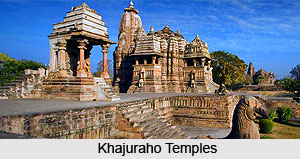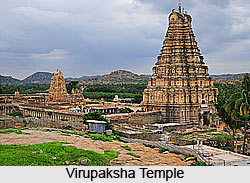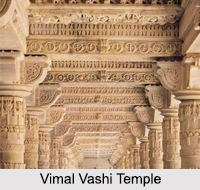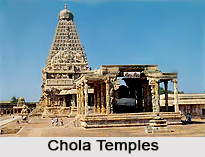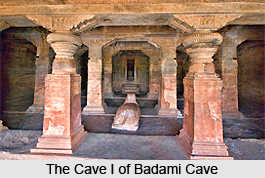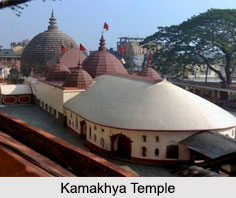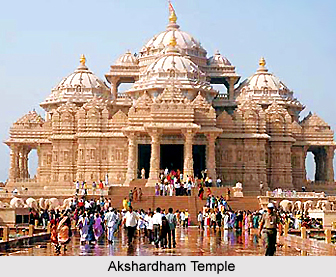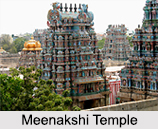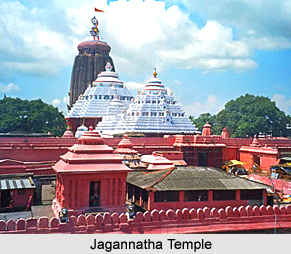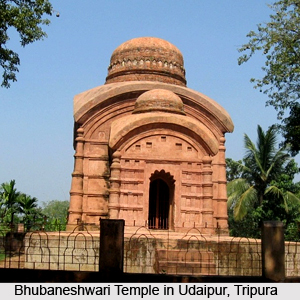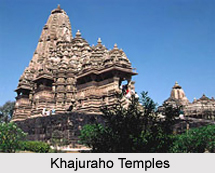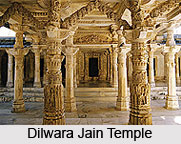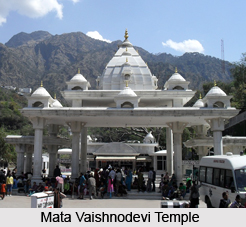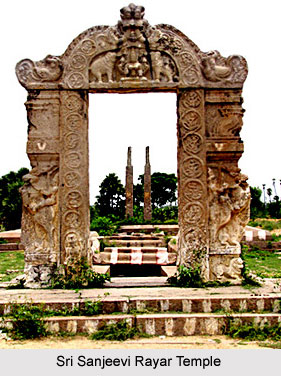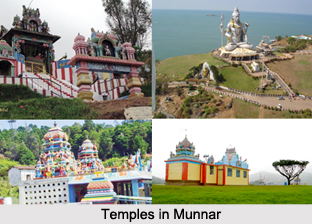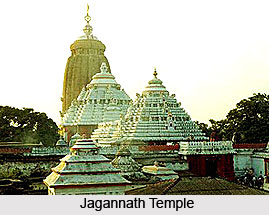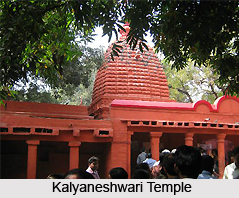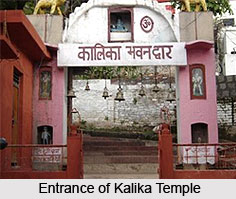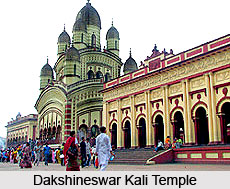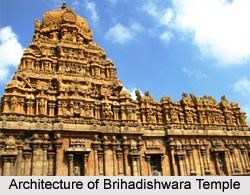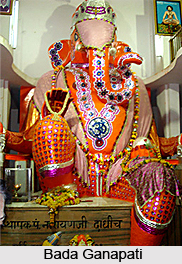 Temples of Indore district are among the most prominent centres of pilgrimage in the state of Madhya Pradesh. One of the most famous temples in the district of Indore is the Kaanch Mandir. The Kaanch Mandir or Glass temple, which is a Jain temple, is a marvel in glass. This temple was constructed by the `Cotton King` Sir Hukamchand Seth in the early 20th century. The ceiling, walls, floor, doors and pillars are entirely inlaid with glass. The mirror work of this temple reflects minute detailing. There are paintings done in coloured glass which depict stories from the Jain scriptures. At the top, there is a special glass chamber which multiplies the three statues of Lord Mahavira installed there, into an infinite number.
Temples of Indore district are among the most prominent centres of pilgrimage in the state of Madhya Pradesh. One of the most famous temples in the district of Indore is the Kaanch Mandir. The Kaanch Mandir or Glass temple, which is a Jain temple, is a marvel in glass. This temple was constructed by the `Cotton King` Sir Hukamchand Seth in the early 20th century. The ceiling, walls, floor, doors and pillars are entirely inlaid with glass. The mirror work of this temple reflects minute detailing. There are paintings done in coloured glass which depict stories from the Jain scriptures. At the top, there is a special glass chamber which multiplies the three statues of Lord Mahavira installed there, into an infinite number.
Bada Ganapati, better known for its size than antiquity, this temple houses perhaps the largest Ganesh idol in the world, measuring 25 feet from crown to foot. Created as a result of a dream to an Avantika (Ujjain) resident Shri Dadhich, it was erected in the year 1875. The idol has a most interesting configuration of ingredients; lime stone, bricks, masala made of methi dana, jaggery, soil collected from seven moksha puris including Ayodhya, Maya, Mathura, Kashi, Avantika, Kanchi and Dwarka and mud from stables of elephant, horse and cow, the powder of Pancharatna; panna, heera, moti, pukhraj and manek (emerald, diamond, pearl, topaz and ruby) and the holy water from all major places of pilgrimage. The metallic frame is of gold, copper, silver, brass and iron.
The Gopal Mandir is also one of the renowned religious places in the Indore district. This is a Krishna temple built by Krishna Bai Holkar in the year 1832. Situated on the right wing of the Rajwada, it has a big central hall with stupendous pillars possessing a massive roof which is elaborately decorated. Its system of lighting in the form of huge glass chandeliers is eye catching. Another notable temple in this district is the Annapurna Mandir. Inspired by the Meenakshi temple of Madurai, four life size elephants hold an ornately decorative gate in plaster. Inside the complex, apart from the main temple of Annapurna Devi, there are also the temples of Kal Bhairav, Lord Shiva and Lord Hanuman. There is also a Pravachan hall. The outer wall of the main temple is decorated with colourful reliefs from mythological stories.
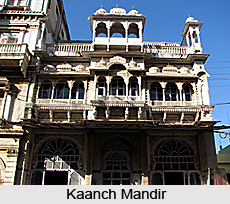 Bijasen Tekri is a small and beautiful hillock in the district of Indore. This hillock or tekri has a small temple of Bijasen Mata, constructed in the year 1920. Mela is held here during Navaratri. From this hill, one gets a magnificent view of the sunset and a breathtaking view of city at night. Perched on top of the hill was a guest house of the Holkars, now converted into a Border Security Force Arms Museum. The surrounding area is being developed into gardens with a small lake. Another major place of pilgrimage in the district of Indore is the Deoguradia village. In this village stands the monolithic rock temple built in the 7th Century and redone in the 18th Century by Ahilya Bai Holkar. Also known as Garuda Tirth, it has a water outlet in the shape of Gomukh from which water flows out almost as in `abhishek.` The original Shiva linga is 12 feet under water in a sunken temple above which the present temple is constructed. On every Shivaratri, a fair is held in honour of the deity, Shri Gutkeshwar Mahadeo.
Bijasen Tekri is a small and beautiful hillock in the district of Indore. This hillock or tekri has a small temple of Bijasen Mata, constructed in the year 1920. Mela is held here during Navaratri. From this hill, one gets a magnificent view of the sunset and a breathtaking view of city at night. Perched on top of the hill was a guest house of the Holkars, now converted into a Border Security Force Arms Museum. The surrounding area is being developed into gardens with a small lake. Another major place of pilgrimage in the district of Indore is the Deoguradia village. In this village stands the monolithic rock temple built in the 7th Century and redone in the 18th Century by Ahilya Bai Holkar. Also known as Garuda Tirth, it has a water outlet in the shape of Gomukh from which water flows out almost as in `abhishek.` The original Shiva linga is 12 feet under water in a sunken temple above which the present temple is constructed. On every Shivaratri, a fair is held in honour of the deity, Shri Gutkeshwar Mahadeo.
Geeta Bhavan is a newly built structure which holds several statues of Gods of various religions. It is open to all, irrespective of caste, creed, religion etc., with provision for devotees to pray separately. Central hall is decorated with wall paintings from Puranas, Ramayana, Mahabharata, and is used for religious discourses or Pravachans. Book stores within the premises of Geeta Bhavan sell religious books.
